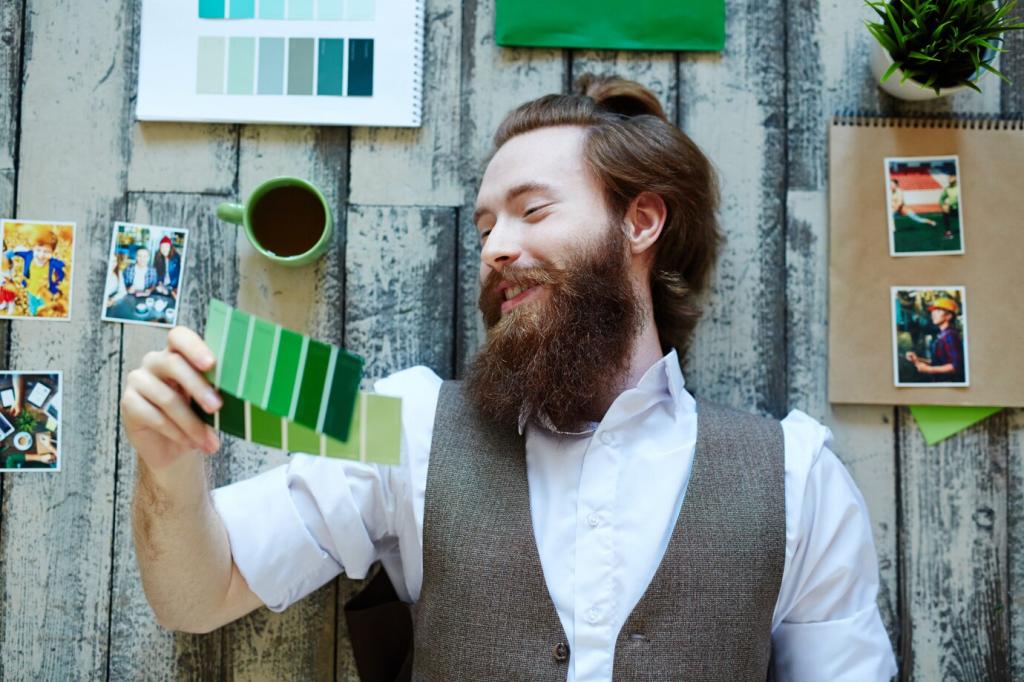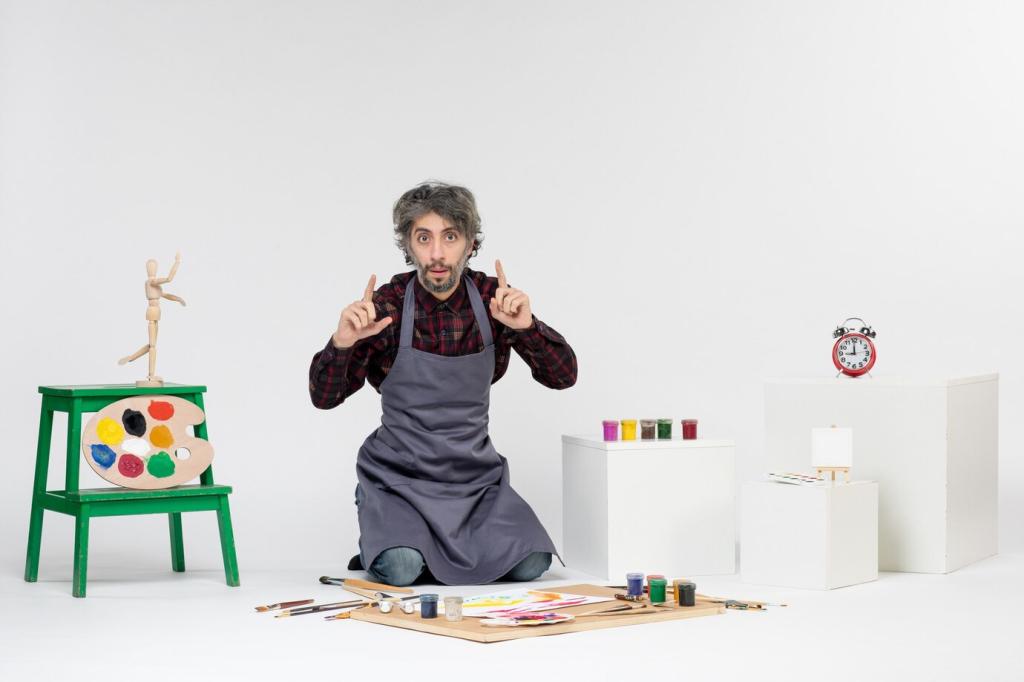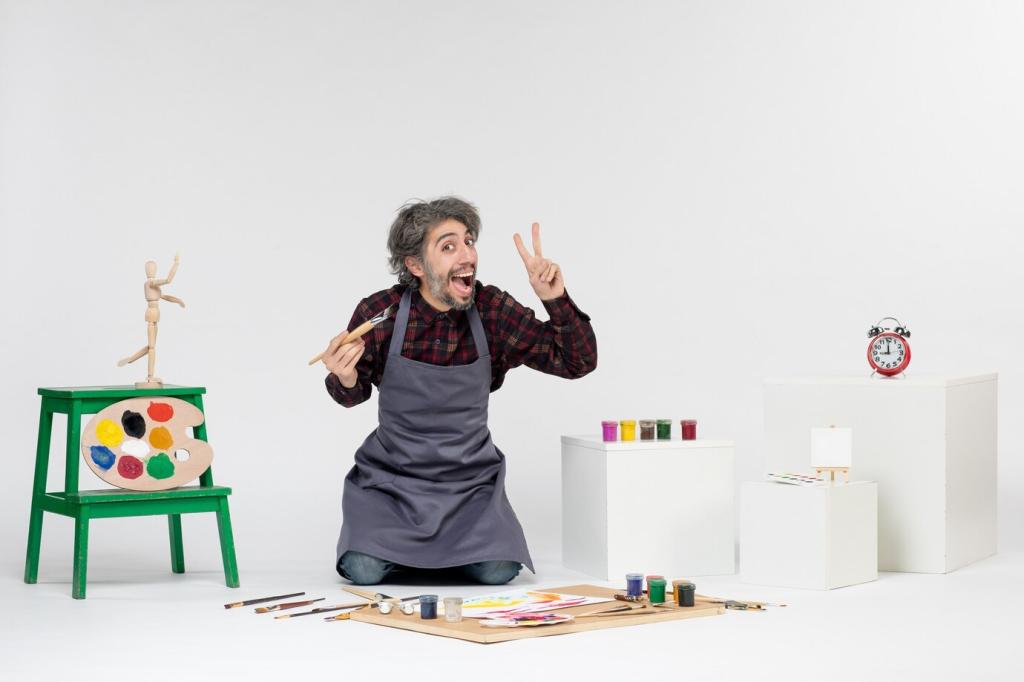Drying, Firing, and Glazing Without a Full Studio
Slow, even drying prevents cracks. Keep pieces loosely covered in plastic, then uncover gradually. At leather-hard, handles attach cleanly; at bone-dry, pieces are fragile and ready for bisque. Avoid sunny windows and drafts. Patience now saves heartache later.
Drying, Firing, and Glazing Without a Full Studio
True ceramics require a kiln for vitrification. Consider community studios, kiln services, or local makers who offer firing. Discuss clay and glaze cone ranges. Never rely on a kitchen oven for ceramic firing; it cannot achieve ceramic maturity or safe, durable results.
Drying, Firing, and Glazing Without a Full Studio
Match glaze to clay and firing temperature. Always make test tiles with your specific clay and firing schedule. Dip, pour, or brush evenly, wiping the foot clean. For foodware, choose certified food-safe glazes and fire to the recommended cone. Keep detailed notes and photos.



